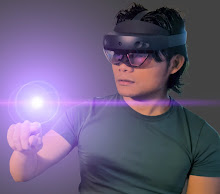For my PhD full proposal, it is important that I understand what my overarching goals are and subsequently the objectives that underpin the primary objective.
The overarching objective of this research is to develop a comprehensive postphenomenological understanding of the lived experiences of users interacting with dynamic MRDTs, specifically analysing how this technology mediates their perception, action, and understanding within a hybrid physical-digital environment. By properly applying this postphenomenological framework, a robust research plan will be designed and configured as outlined in this proposal in order to extract and articulate first-person perspective accounts through appropriate and effective data collection methods. Achieving this will establish the core phenomenological data (the “what” and the “how” of experience), which will be the basis for all the potential outputs of the in-depth analysis.
The primary objective of the research project is contingent upon achieving the following supporting objectives:
- To design, construct, and implement a functional MRDT system, comprising a physical component (e.g. smart cube) equipped with sensors and a custom-developed HoloLens 2 application for real-time holographic visualisation and bi-directional interaction. This would be the reduced form and representative of an asset twin, which will establish the specific technological system that will serve as the phenomenon to be observed in this study.
- To analyse how Don Ihde’s human-technology relations (embodiment, hermeneutic, alterity, and background) manifest in user interactions with MRDTs, and how these relations shape their experience of agency, presence, and connection. This is the core theoretical framework that will be used to interpret the lived experiences of the selected participants.
- To identify essential themes and structures in user accounts of MRDT interaction, revealing the perceptual transformations and shifts in sense-making facilitated by the technology. This will be the in-depth analysis of the data collected. The bulk of the novel contribution is envisaged to arise from the synthesis and deeper analysis of the data.
- To develop a set of design considerations, informed by phenomenological analysis, that foster user-centred MRDT interfaces. This represents a potential offshoot of the research findings. From the perspective of MR application development, these insights could highlight new avenues for improving user interface (UI) design, as user experience (UX) will be thoroughly explored.
- To disseminate the findings through peer-reviewed publications and presentations, contributing to the fields of HCI and the philosophy of technology. This is the output objective, which is highly dependent on the successful completion and analysis of all preceding objectives.
The application of this postphenomenological framework to the interaction with this particular technology is to achieve the overall objective of gaining a deeper and nuanced understanding of the lived experience of users interacting with MRDTs. This will be a phenomenological inquiry informed by Don Ihde’s postphenomenology and his framework of Human-Technology Relations (HTR). The impact and contribution will advance the nuanced current understanding of the postphenomenology of MRDTs as a novel technological context in the ICT and HCI fields.
